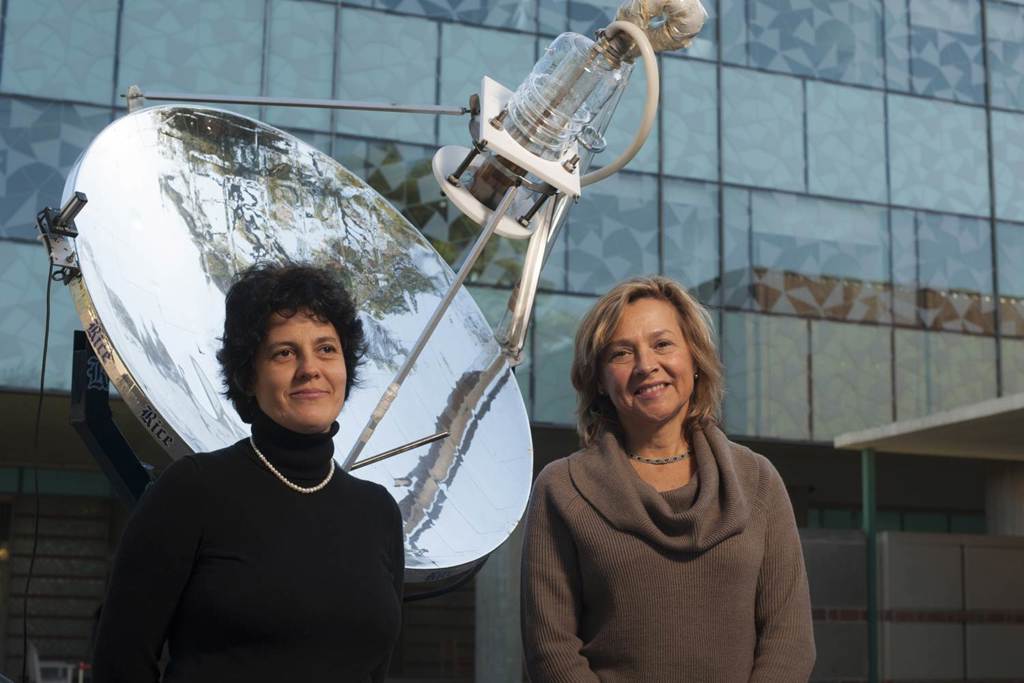
Oara Neumann and Naomi Halas stand in front of their experimental apparatus for producing steam from sunlight.
A technology that uses nanoparticles to convert solar energy directly into steam was recently reported by researchers at Rice University. Unlike standard methods that involve heating the bulk of the water, this technique heats water enough to turn it to vapor just near the surface of nanoparticles (ACS Nano, doi:10.1021/nn304948h), allowing researchers to produce steam even from cold water.
The procedure begins with sunlight hitting a solution containing broadly absorbing metal or carbon nanoparticles. The energy absorbed by the nanoparticles mostly creates heat at their surface, thus creating steam within a few seconds even though the temperature of the bulk fluid is low. The steam rises above the surface of the solution, but the nanoparticles stay in solution. Naomi Halas, lead scientist on the project says, “We’re going from heating water on the macro scale to heating it at the nanoscale.”
The researchers chose nanoparticles, either SiO2 or Au nanoshells and water-soluble carbon, that absorb light across the spectrum and into the UV. Metallic particles that are smaller than the wavelength of light absorb light very well because of their surface plasmons, but then have trouble re-emitting the energy, which results in a dramatic rise in temperature at the surface. This is a useful property being explored for killing cancer cells and other biomedical applications.
The group’s analysis suggests that 80 percent of the energy from absorbed sunlight is converted into steam. “We’re not changing any of the laws of thermodynamics,” Halas said. “We’re just boiling water in a radically different way.” While the steam could be used to generate electricity, the first uses are likely to be steam for sterilizing equipment or purifying water.
